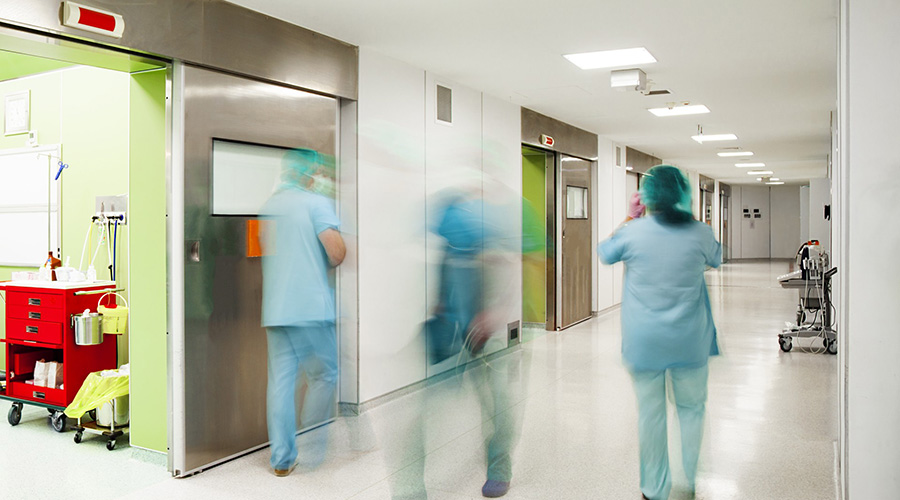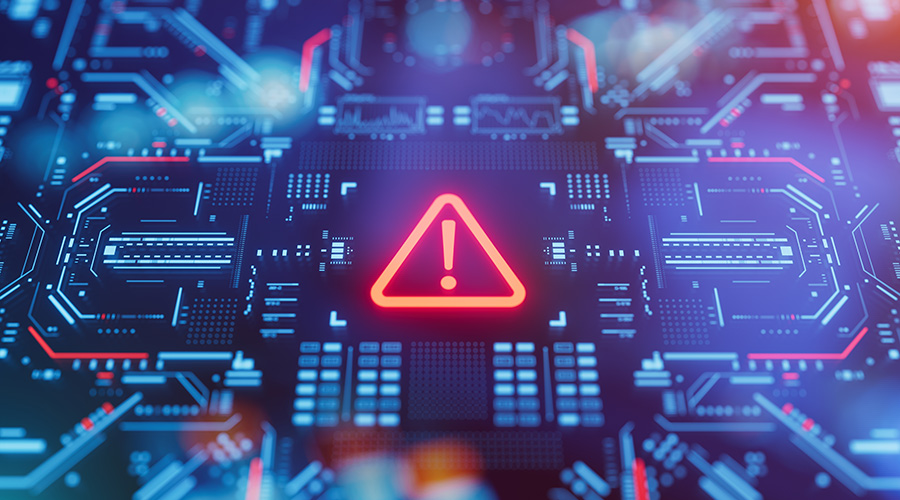Engineers, experts, public health professionals and news outlets are warning that people returning to emptied buildings could be at risk of contracting Legionnaires’ disease. Likewise, many healthcare facilities may have experienced changes in their occupancy and water usage and are not immune to this concern. Water with different usage patterns inside facilities can become stale and allow for the formation of biofilms, accumulations, and high levels of microorganisms, including bacteria.
A major concern for growth like this is Legionella pneumophila, the primary cause of Legionnaires’ disease. Healthcare facilities that have developed water management teams and programs in accordance with Centers for Medicare & Medicaid Services (CMS) standards and The Joint Commission requirements better understand how to control L. pneumophila and other opportunistic pathogens, but some programs still may not involve validation through direct testing for these bacteria.
Especially under current circumstances, validating the effectiveness of a water management program by testing for L. pneumophila is critical to ensure reopening facilities have fully mitigated the risks to their patients and staff.
There have been several guidance documents that detail how to reopen buildings, but even the foremost experts in building water management indicate that there is significant uncertainty and variations between these reports.1 While flushing and shock disinfection are good initial steps to take, bacteria that have taken up residence in building plumbing systems for so long may have increased resistance to these actions, making traditional methods of control less effective.1 Simply performing these remediations does not guarantee they worked.
In contrast, healthcare facilities that validate their water management programs (WMPs) with L. pneumophila testing will be the best positioned to reduce disease risk as their buildings and building wings reopen. Here are five benefits of a validated WMP:
Understand your building’s specific needs, and its riskiest locations
Each building is an ecosystem to itself, even on the same campus. Measures that successfully control bacteria in one building may not work for another. With a validated WMP, you can design effective control measures specific to each building. For example, buildings or locations within a building that have residents with higher risk, such as intensive care, surgical, or oncology units may require a more rigorous protocol than other wings or buildings.
Have established protocols for reopening
Instead of sorting through guidance documents at reopening, preparing the program in advance will reduce layers of difficulty and confusion. Facilities with validated WMPs will already have their control measures and procedures established to guide recommissioning, and these facilities will have the ability to assess the effectiveness of their WMPs before they are put into direct practice.
Know when flushing and disinfection measures are successfully controlling bacteria (and when they aren’t)
By establishing a baseline set of data, particularly with respect to any level of L. pneumophila contamination, owners and engineers can know how far their building systems have drifted from normal. Flushing and shock disinfectants are good first steps, but validation will confirm their effectiveness, particularly with testing before and after these steps are taken.
Have records to rely on in response to legal claims
Preventing cases of healthcare facility-acquired Legionnaires’ disease is critical, as is the documentation that demonstrates the effectiveness of your prevention efforts. The average case of Legionnaires’ disease costs a U.S. hospital $42,855,2 but the total cost of a healthcare facility-acquired case of Legionnaires’ disease can be much higher when negative news coverage, protracted legal battles, and hefty fines are factored in. In response to a legal claim, facilities with validated WMPs and L. pneumophila test results can provide records not just of control measures but also how the measures were evaluated. Proof that risk has been evaluated and mitigations were performed is important for defensibility.
Know that you are reducing the risk for your most vulnerable occupants
L. pneumophila is an opportunistic pathogen, meaning it disproportionately affects groups with certain risk factors. Patients that are 55+, smokers, and/or immunocompromised are most vulnerable. COVID-19 patients also appear to be at higher risk, a likely reflection of the fact that both the COVID-19 related illness and Legionnaires’ disease are respiratory in nature. A preliminary study from 68 COVID-19 patients in China found that 20% were infected with L. pneumophila.3 It is, therefore, critical for healthcare facilities to do everything they can to minimize exposure for all vulnerable patients, and experts agree that a validated WMP is the most effective way to reduce risk.
Creating a WMP is the first recommendation in the U.S. Centers for Disease Control and Prevention’s (CDC’s) guidance “8 steps to minimize Legionella risk before your business or building reopens,” and there is a reason: it’s the only way to effectively reduce the risk.4 Due to compliance with CMS standards, many healthcare facilities are more prepared than other building owners. In 2020, however, things have changed, making the risk higher for all buildings.
Changes in building usage, primarily less usage, that are the result of COVID-19 related social distancing and reduced building occupancy guidance, elevate the importance of having a clear WMP and validating it with direct monitoring for the presence of L. pneumophila. Healthcare facilities with validated WMPs can best assess the conditions of their buildings, ensure any required remediation is effective, and fully understand the health risks to their patients and staff.
Dan Broder is a scientist and team leader for new product development in water research and development at IDEXX, where he develops methods for quantifying waterborne microorganisms.
References
-
Proctor CR, Rhoads WJ, Keane T, et al. Considerations for large building water quality after extended stagnation [published online ahead of print June 16, 2020]. AWWA Water Sci. 2020;e1186. doi:10.1002/aws2.1186
-
Naumova EN, Liss A, Jagai JS, Behlau I, Griffiths JK. Hospitalizations due to selected infections caused by opportunistic premise plumbing pathogens (OPPP) and reported drug resistance in the United States older adult population in 1991–2006. J Public Health Policy. 2016;37(4):500–513. doi:10.1057/s41271-016-0038-8
-
Xing Q, Li G, Xing Y, et al. Precautions are needed for COVID-19 patients with coinfection of common respiratory pathogens [preprint posted March 5, 2020]. medRxiv. doi:10.1101/2020.02.29.20027698
-
Centers for Disease Control and Prevention. Guidance for reopening buildings after prolonged shutdown or reduced operation. www.cdc.gov/coronavirus/2019-ncov/php/building-water-system.html. Updated May 7, 2020. Accessed July 21, 2020.

 Making the Energy Efficiency Case to the C-Suite
Making the Energy Efficiency Case to the C-Suite How to Avoid HAIs This Flu Season
How to Avoid HAIs This Flu Season Design Phase Set to Begin for Hospital Annex at SUNY Upstate Medical
Design Phase Set to Begin for Hospital Annex at SUNY Upstate Medical Building Hospital Resilience in an Era of Extreme Weather
Building Hospital Resilience in an Era of Extreme Weather Ennoble Care Falls Victim to Data Breach
Ennoble Care Falls Victim to Data Breach